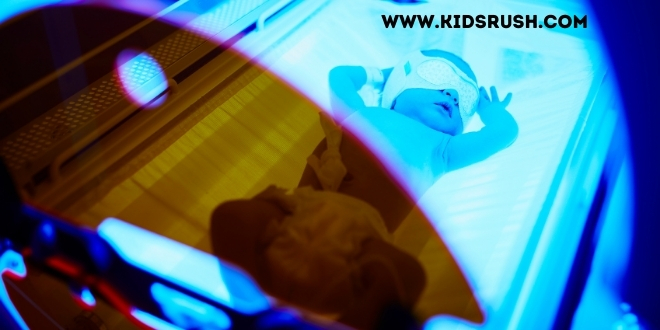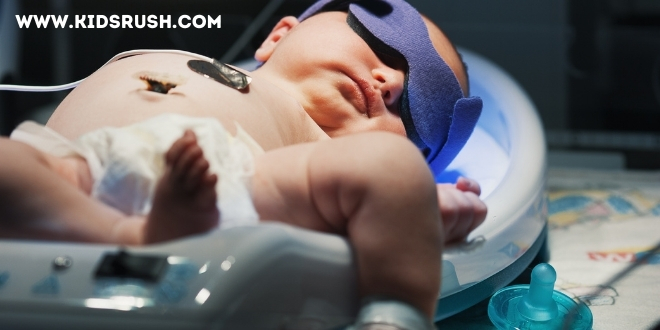What you should know about neonatal jaundice in newborns?:
Neonatal jaundice does not mean that a child has a serious illness. Read more about this condition here.
Parents of newborns can be so overwhelmed by the new situation that the slightest rash or symptom makes them worry. When it comes to neonatal jaundice in newborns, however, it is good to know that it is not something you should worry about. Still, you must keep an eye on the condition so that it does not reach extreme levels. In today’s article, you will find more information about jaundice in newborns and advice on how to act to prevent it from getting worse.
The causes of neonatal jaundice in newborns

The definition of neonatal jaundice is a symptom when “the skin and mucous membranes turn yellow”. Bilirubin, a substance that occurs when red blood cells are broken down, is usually the cause. A blood test is the best way to find out the exact levels of bilirubin in the blood.
The fact that a child becomes yellower is not a serious condition in cases where bilirubin levels are not too high. If they do, the child has hyperbilirubinemia and needs hospital treatment. In most cases, all that is needed is controls and monitoring.
It is normal for the skin of a newborn to be slightly yellow after two or three days after birth. This is because their liver must take over the function of removing the excess bilirubin. But the liver needs some time to adjust to the birth before it begins to function properly.
Treatment of neonatal jaundice in newborns

Now that you know that neonatal jaundice in newborns is not a serious condition, you should learn how to deal with it. All you need to do is follow some basic routines:
- Keep track of your newborn’s feeding schedule. If you are breastfeeding your baby, it is a little more complicated to measure food intake accurately. Breastfeeding-related neonatal jaundice is rare and usually occurs one week after birth. Only a pediatrician can diagnose the newborn and tell if he or she should stop breastfeeding for a day or two.
- Light treatment – in a hospital or at home. This is a technique used in neonatology wards in the treatment of hyperbilirubinemia. If the newborn does not need a hospital stay, you can do the same treatment at home. All you need to do is expose your newborn to sunlight for 10 minutes a day. Make sure he or she is wearing only a diaper and eye protection. The best time to do this is before 9 a.m.
Identify possible risk situations
As we mentioned above, neonatal jaundice in newborns is quite common, so there is no need to worry. But you should be aware of some signs that require medical attention:
- Early-onset of neonatal jaundice. If the color is present from the first day of life, the pediatrician takes a blood sample to evaluate the situation.
- Neonatal jaundice can continue during the baby’s first two weeks of life. This is the time the liver needs to adapt before it begins to function properly. If your child does not get a more normal color after this time, you should also consult a doctor.
Complications in newborns with neonatal jaundice

When bilirubin levels become too high, the substance invades the brain cells. Inside the brain cells, they alter the metabolism and function of nerve cells. Doctors call this nuclear nectar. To prevent this, consult your pediatrician so that they can examine the baby one week after birth.
The pediatrician performs all necessary tests to assess bilirubin levels. So if the values are extremely high, he or she will admit the child to the hospital for phototherapy.
Phototherapy in hospital
A newborn who needs phototherapy needs to stay in the hospital for several days. Most hospitals now allow parents to be with their children around the clock. But it is also important to take some breaks to rest at home.
Nurses in neonatal wards can provide basic care for newborns with hyperbilirubinemia. You should follow the recommendations of the healthcare staff. Do not stop breastfeeding the baby, but follow the advice of the hospital staff to do it in the best way under the prevailing circumstances.
Conclusion
Skin changes due to neonatal jaundice during the first days of life are normal for a newborn. However, it is important to keep an eye on the condition and alert your doctor if you notice any changes or if neonatal jaundice does not go away on its own.
References
